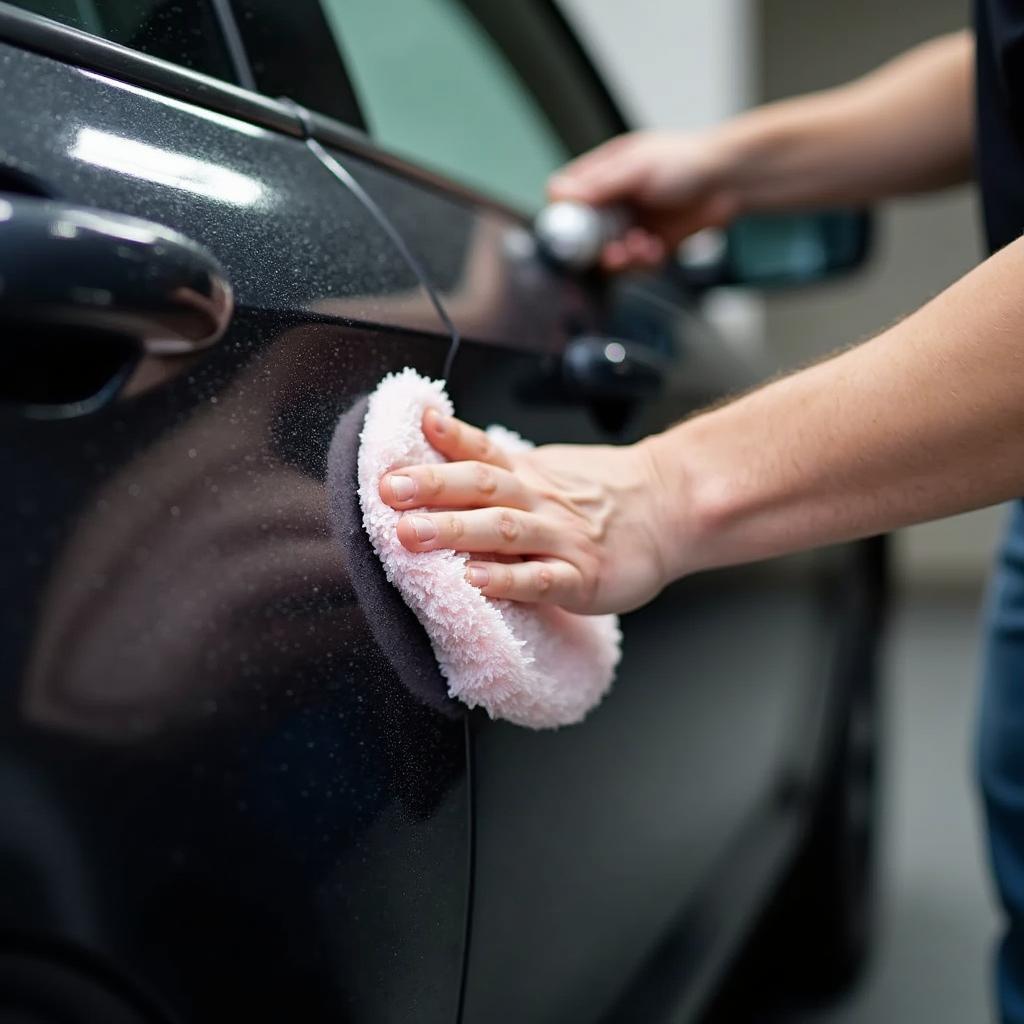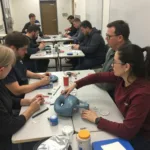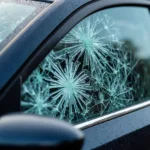Rough paint is an eyesore, diminishing the overall appearance and value of your car. But don’t despair! Repairing rough car paint is achievable, often without needing a complete respray. This comprehensive guide will explore the causes of rough paint and provide effective DIY solutions and professional options to restore your car’s finish to its former glory.
Understanding the Causes of Rough Paint
Before diving into solutions, it’s crucial to understand what makes car paint rough. Common culprits include:
- Oxidation: Prolonged exposure to sunlight and air causes the paint to oxidize, leading to a chalky, faded, and rough texture.
- Water Spots: Mineral deposits left by evaporated water, especially hard water, etch into the paint, creating a rough surface.
- Tree Sap and Bird Droppings: These natural elements contain acidic substances that can eat into the paint, leaving behind rough, discolored patches.
- Paint Overspray: Tiny droplets of paint from improper spray painting or overspray from other sources can land and dry on your car, resulting in a rough, bumpy texture.
- Poor Washing Techniques: Using harsh detergents, abrasive sponges, or improper drying methods can scratch and dull the paint, leading to a rough feel.
DIY Solutions for Repairing Rough Car Paint
For minor roughness, several DIY methods can help restore smoothness:
1. Washing and Clay Bar Treatment
Thoroughly wash your car using a pH-neutral car wash soap and a microfiber wash mitt. Once dry, use a clay bar specifically designed for automotive paint. The clay bar acts as a magnet, lifting off embedded contaminants that washing alone can’t remove. Lubricate the surface with a clay bar lubricant and gently glide the clay bar across the paint.
2. Polishing with a Dual-Action Polisher
For more stubborn roughness, consider using a dual-action polisher. This tool, when paired with a polishing compound, effectively removes light scratches, oxidation, and other imperfections that contribute to a rough texture. Start with a less aggressive polishing pad and compound, working your way up if needed.
3. Applying a Paint Cleanser
 Applying Paint Cleanser
Applying Paint Cleanser
Paint cleansers chemically remove embedded contaminants and oxidation without being as abrasive as polishing compounds. They are a good option for cars with relatively minor roughness. Apply the paint cleanser to a microfiber applicator pad and work it into the paint using circular motions.
When to Seek Professional Help
While DIY solutions can be effective for minor roughness, some situations warrant professional intervention:
- Deep Scratches or Paint Chips: If the roughness is caused by deep scratches or paint chips, professional repainting or touch-ups might be necessary.
- Extensive Damage: If a large area of your car’s paint is rough, seeking professional help is advisable for a thorough and effective repair.
- Lack of Experience: If you’re uncomfortable with DIY methods or unsure about the right products to use, a professional detailer or body shop can provide expert assistance.
“[For extensive paint damage or if you lack experience, it’s best to consult a professional for Peterborough car paint repair,” advises John Miller, an automotive paint specialist with over 20 years of experience.
Professional Car Paint Repair Options
Professional detailers and body shops offer several solutions for repairing rough car paint:
- Wet Sanding and Buffing: This technique involves using progressively finer-grit sandpaper to level out imperfections and smooth the paint surface, followed by buffing to restore shine.
- Paint Correction: This multi-step process involves a combination of machine polishing, compounding, and finishing to remove scratches, swirls, and other imperfections, resulting in a smooth and glossy finish.
- Spot Painting: For localized areas of damage, spot painting involves matching the existing paint color and applying a fresh coat to the affected area.
Preventing Future Roughness
Prevention is always better than cure. Here are some tips to keep your car’s paint smooth:
- Regular Washing: Wash your car frequently, especially after exposure to contaminants like bird droppings, tree sap, or industrial fallout.
- Waxing and Sealing: Applying a coat of wax or sealant provides a protective layer that can help prevent oxidation, water spots, and other damage.
- Covered Parking: Whenever possible, park your car in a garage or under a carport to shield it from the elements.
“[Regular car washes and waxing are essential for maintaining smooth paint and preventing future damage,” emphasizes Miller. “Think of it as a protective shield for your car’s exterior.”
Conclusion
Repairing rough paint is crucial for maintaining your car’s appearance and value. By understanding the causes and implementing appropriate solutions, you can restore your car’s paint to its former glory. While DIY methods can be effective for minor imperfections, professional help is recommended for more severe damage. Remember, regular maintenance is key to preventing future roughness and keeping your car looking its best.
FAQs
1. Can I use household cleaners to wash my car?
No, household cleaners are too harsh for automotive paint and can strip away its protective layers. Always use a pH-neutral car wash soap.
2. How often should I wax my car?
It’s generally recommended to wax your car every three months, but this can vary depending on your climate and driving conditions.
3. Can I repair deep scratches myself?
Deep scratches that expose the primer or metal underneath usually require professional attention for proper repair.
4. How can I remove tree sap from my car’s paint?
Soak a microfiber cloth in rubbing alcohol or a dedicated tree sap remover and gently rub the affected area.
5. How much does professional car paint repair cost?
The cost of professional car paint repair can vary widely depending on the severity of the damage and the chosen repair method. It’s best to get a quote from a reputable detailer or body shop.
Looking for More Car Repair Tips?
Check out our guide on touch up car paint repair for step-by-step instructions on fixing minor paint chips and scratches.
Need help with car painting in Canoga Park? We’ve got you covered! Learn more about our expert car repair Canoga Park and painting services.
If you’re interested in pursuing a career in automotive painting, our comprehensive car paint repair training program can equip you with the skills and knowledge you need.
For a complete guide on various car paint repair techniques, be sure to read our in-depth article on how to repair paint car.
Contact us today for all your car repair and paint restoration needs! We’re available 24/7 via WhatsApp at +1(641)206-8880 or email at [email protected].


